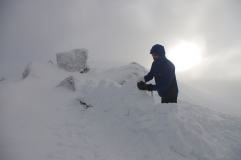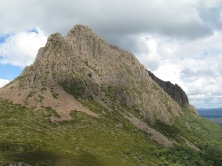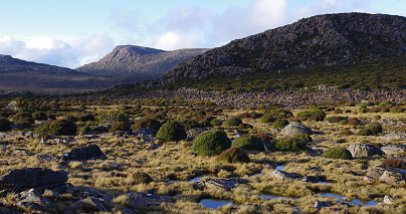Each spring for thousands of years, tens of millions of bogong moths (Agrotis infusa) have migrated more than 1,000 kilometres from their breeding grounds in southern Queensland, north and the western slopes of New South Wales, and Victoria, to caves in the Australian Alps.
The moths are a vital part of the food chain for many alpine birds and mammals, including the endangered mountain pygmy possum (Burramys parvus). But prolonged drought through parts of southern Queensland and northern New South Wales has now affected the availability of grass on which the larvae of the moths feed, severely reducing moth populations in the Alps, and for the past two years there have been no moths at all in many of the caves.
Up in the mountains, restoration programs have been slowly rebuilding remnant mountain pygmy possum (MPP) populations through recreating and connecting habitat, controlling predators, and captive breeding programs. But the drought poses an existential threat to the possum.
One of the success stories of this work has happened at Mt Hotham in north east Victoria, where the Mt Hotham Alpine Resort Management Board (MHARMB) has worked with a range of partners to bring the possum back from the brink of extinction. They are now considering how to respond to this new threat to the viability of the species.
Georgina Boardman and Bev Lawrence work with the MHARMB on the possum recovery program. They recently gave an update on the program during the Victorian backcountry festival, held at Mt Hotham in early September 2019.
The Hotham recovery program
Highlights of the program have been the creation of boulderfields under the Great Alpine Road to connect the female and male possums (known as the ‘tunnel of love’). The first one was a great success, leading to a three fold increase in population numbers. The second tunnel, built in the last few years connects Mt Little Higginbotham with the boulderfields below.
Basically, any boulderfield in the sub alpine zone is existing or potential habitat. This includes the big fields that become part of the Blue Ribbon ski runs in good snow, the large fields on the east side of Mt Loch, and out in the Golden Point area. Ongoing predator control work is reducing the numbers of foxes, and MPP populations continue to grow. A baiting program is run to reduce fox numbers. Cats are also a predator, however best control methods are still being developed. Mt Hotham is one of the strongholds of the species, with around 2,000 individuals thought to be living across the Alps in localised populations.
But the drought over the past two years has had a dramatic impact on MPP populations across the Alps. There are a range of reasons why moth populations may be affected. As an agricultural pest in the larvae stage, they have always been sprayed (but survived in sufficient numbers to make their annual population). The drought appears to be a major factor in the massive reduction in numbers of moths. Some moths may also be diverted by lights as they make the journey. For instance, large numbers detoured to and then settled in Canberra one year rather than making it all the way to the mountains. It is understood that the lights of Canberra disorientated them.
At Mt Hotham, there as been a very significant drop in MPP numbers over the past two summers. There has also been increased mortality of babies in the pouch because the mothers have been starving. The MPP recovery team has been looking at the impacts of the reduction in moth numbers and identifying options to support the MPP to regain previous numbers.
They have been:
- Looking into the diet of the MPP and identifying other food sources that could be boosted locally to full the gap left by the missing moths
- Looking into supplementary feeding of animals on the mountain
- Some animals may be captured and taken to the Healesville Sanctuary over summer, then released in autumn.
You can find out about the Zoos Victoria campaign to protect the possum here.
You can read an interview with Georgina Boardman about the MPP program here.
























































Leave a comment